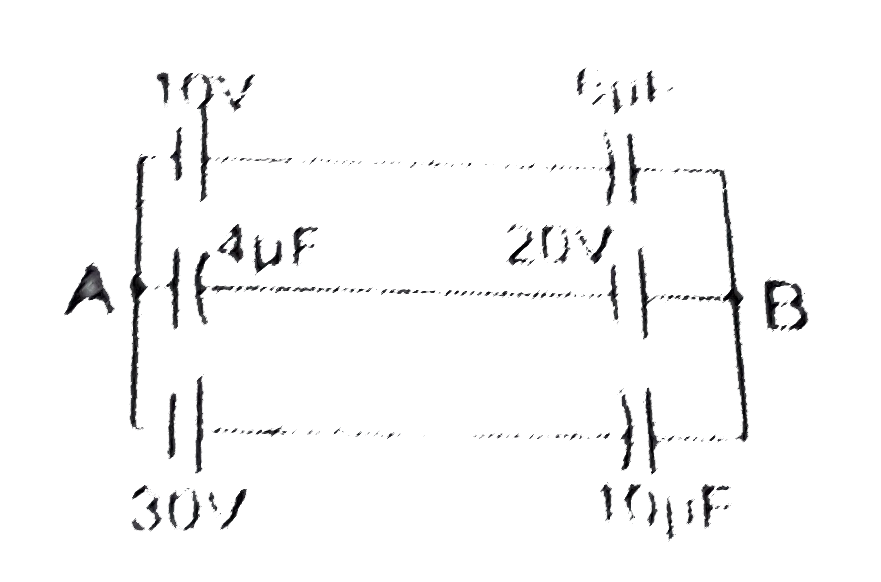Find the potential difference between the points A and B.
(a) 
If VA−VB=5V, find voltage across each capacitor.

Video Solution
Text Solution
(a) 
Here cells are in series and opposing.
Net emf =24−12=12V

Q=2C×12=24C

VA−VB=Q3C=24C3C=8V
(Positive plate is at higher potential)
Alternatively

V1=6C3C+6C×12=8V=VA−VB
(b) 
Then cells are in series, opposing
Net emf =24−12=12V

V1=66+3×12=8V=VB−VA
VA−VB=−8V
( c) 
The cells are in series
Net emf =24−12=12V
The capacitors are in series
1Ceq=18C+112C+124C=14C
Ceq=4C

Q=4C×12=48C
Now return to previous diagram, in series charge on each capacitor is same.

Now move from A to B
VA+Q8C+12=VB
VA+48C8C+12=VB
VA−VB=−18V
(d) 
V1=3C3C+6C×10=103V=VA−VB
( e) 
Move from A to B :
VA−Q1+10−Q2=VB
VA−VB+10=Q+Q2
5+10=3Q2
Q=10μC

V1=Q1=101=10V
V2=Q2=102=5V.
|
Topper's Solved these Questions
Similar Questions
Knowledge Check
Potential difference between points A and B (i.e. VA−VB) is -----
 A2VB4VC8VD12 V
A2VB4VC8VD12 VThe potential difference between the points V and B in the following circuit will be -
 AzeroB2 VC3.5 VD4.5 V
AzeroB2 VC3.5 VD4.5 VThe potential difference (VA−VB) between the point A and B as shown in the figure is
 A9VB8VC15VD13V
A9VB8VC15VD13V
" Find the potential difference across point a and b in fig."
View SolutionFind the potential difference Va−Vb between the points a and b shown in each part of the figure.

View SolutionFind the potential difference Va – Vb between the points a and b shows in each parts of the figure.

View SolutionFind the potential difference Va−Vb between the points a and b shown in each part of the figure.

View SolutionFind the potential difference Va−Vb between the points (1) and (2) shown in each part of Fig.

View Solution

